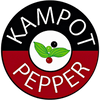Why is Fleur de Sel better than regular table salt?
Most of us use classic kitchen salt our entire lives. However, have you ever wondered if there is a healthier or tastier alternative? There are actually several types of salt, differing in quality and taste. And we'll reveal right away that classic kitchen salt may not be the best choice.

Kitchen Salt
Common salt is extracted chemically, bleached (refined), and in some areas lacking access to the sea, it is also iodized. Kitchen salt is essentially just sodium chloride, which in larger amounts is unhealthy for our bodies. Therefore, we should use kitchen salt very carefully.
Have you heard the term „too salty“? Because that is exactly what kitchen salt is. Excessive intake of such salt destroys taste buds and reduces sensitivity to salty flavors. The vicious circle then ends with further unnecessary over-salting. Although salt is necessary and very important for the human body, its excessive intake can cause problems with the cardiovascular system and damage kidney function. Even though this recommendation applies to any salt, it is likely that this intolerance occurs especially with this ordinary kitchen salt.
Himalayan Salt
In some Czech kitchens, so-called Himalayan salt also appears, which actually does not come from the Himalayas at all. It is mined in Pakistan, in the world's second-largest salt mine, from which 300 million kilograms of salt are extracted annually. The salt is known for its characteristic pink color, caused by the presence of iron in the salt. Unfortunately, salt mining significantly disrupts the environment of the entire area, and the iron present in the salt is in a truly negligible amount, so from a health perspective, this salt cannot perform great miracles.
Salt Flower
If you are looking for truly pure, natural, unrefined salt whose harvesting leaves no trace in nature, salt flower, or Fleur de Sel, is the clear choice for you. This type of salt is obtained by crystallizing seawater that is dried by the sun’s rays. On the surface of so-called sea salt pans, fine crystalline flakes form, which are hand-collected and then neither bleached nor chemically treated. Thanks to this, this rare sea salt has a unique taste, and you can enjoy it without any guilt.
What makes salt flower so rare?
Especially the demanding nature of its harvesting. It is entirely dependent on unique climatic conditions, good weather, and careful handling. Fine flakes do not form if it rains or if there is strong wind. Sea salt pans also require an ideal combination of air humidity and sunshine.
Our salt flower from Kampot is harvested in the coastal areas of this province, where the techniques of its cultivation and collection have remained unchanged for centuries. Local farmers wait with long rakes for the right moment when they can gather the salt flower from the surface and immediately pack and send it to you so you can enjoy the uniqueness of this natural gift from the sea.
Share







